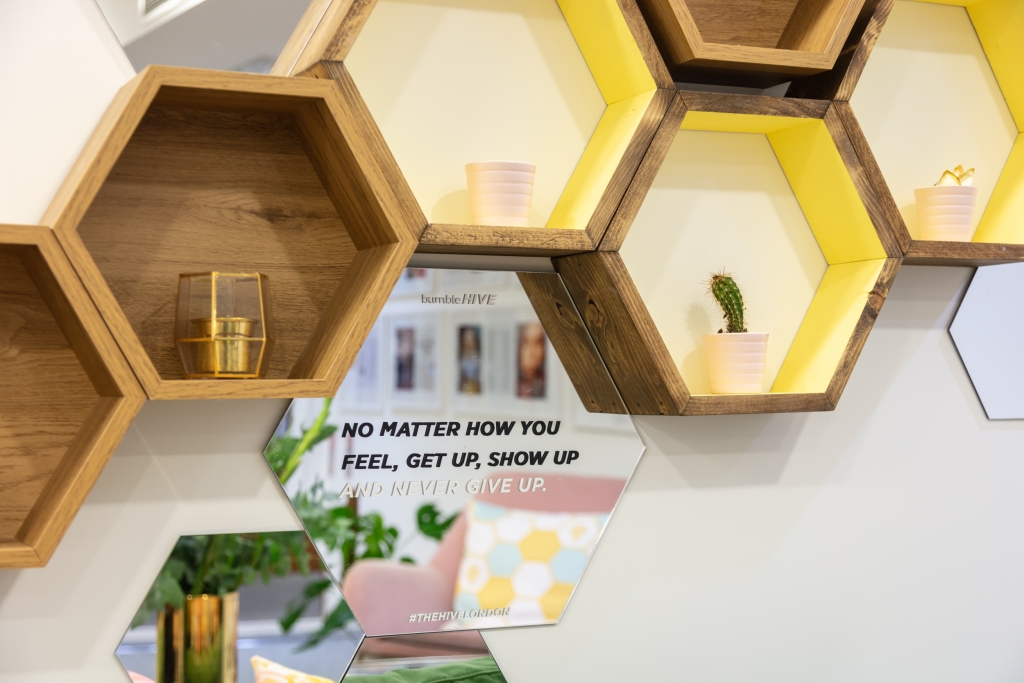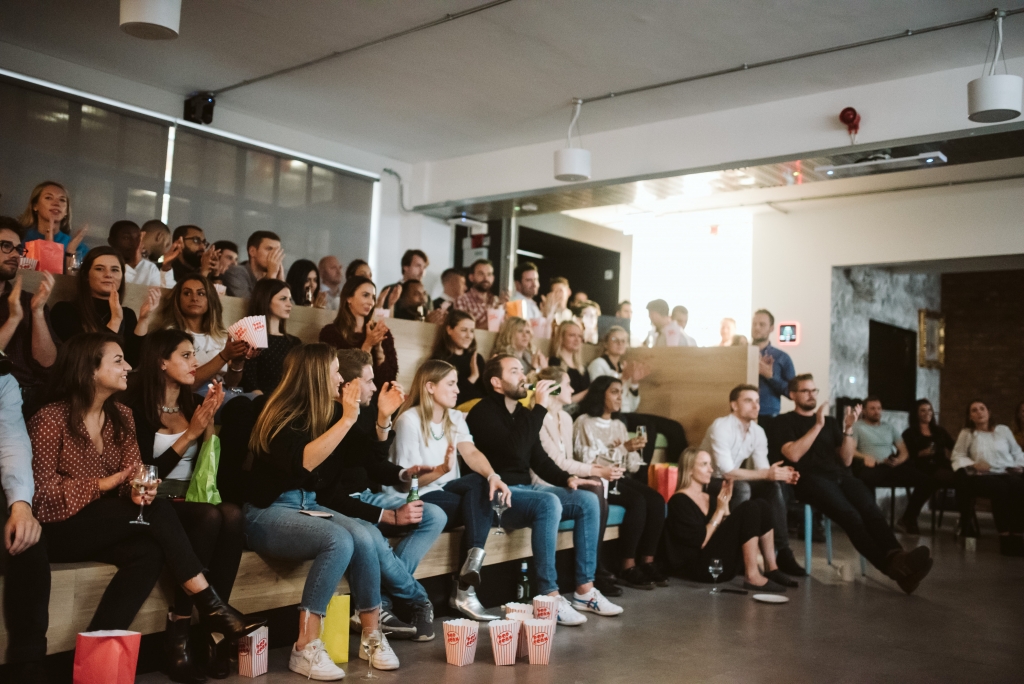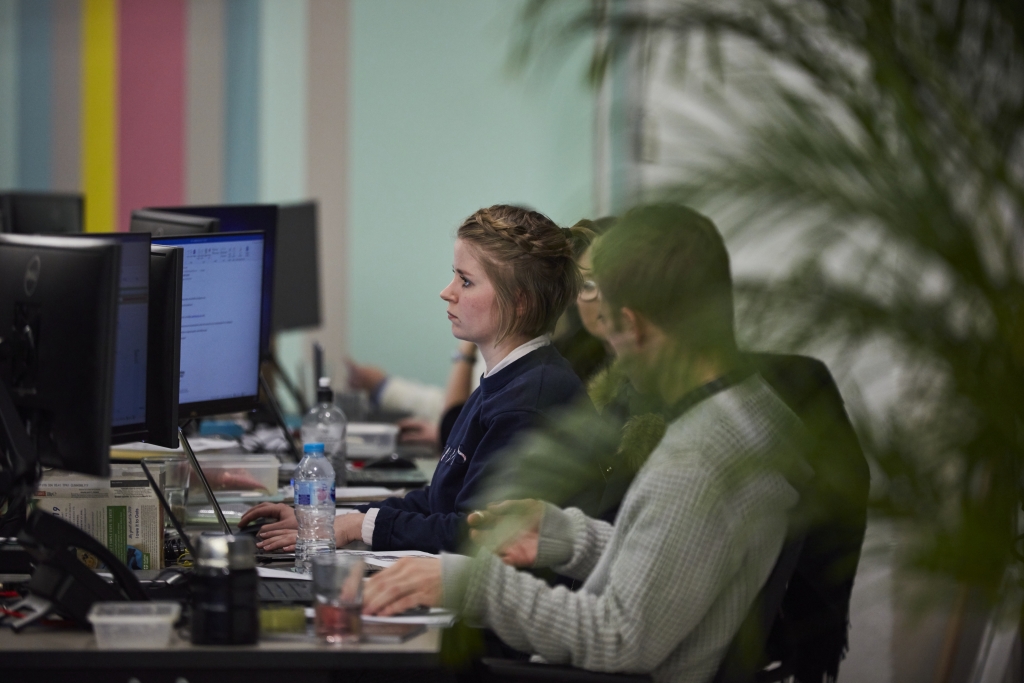The Office
Dthree’s Project Director, Tom Aird, discusses how the office landscape has changed over the last few decades and along with it the ways in which we work.
A home from home
“Today’s working environment demands flexibility, functionality and must become ‘a home from home’ environment, whilst providing a setting for independent and collaborative work, private meetings, events, as well as encourage down time and interactivity … No easy task for us designers!
However, the office hasn’t always been this way. In my lifetime alone, the office landscape has changed immeasurably and along with it the ways in which we work. The 1980s (yep I’m THAT old) was not a good era for office design. The rise of the ‘cubical farms’ enabled by cheap three-sided modular fabric lined partitions restricted staff into tiny boxes, killing off any opportunity for collaboration and team interaction that is now a required necessity for most businesses today. As technology has evolved, we have seen the workforce freed from these ‘stack them high, sell them cheap’ mentality, to the considered, open and agile workspace we see today.
The Office is so much more than rows of desks in a room. Or at least it can be. It is the opportunity for teams, not necessarily just business owners, to elevate a brand, support, define and shape culture, promote employee wellness both physically and mentally, and increase engagement and productivity; all objectives that will essentially drive the business forward.
That said, we can look back and adapt some historical notions of office design to modern ways. Whilst the 80’s saw the rise of the cubical, it allowed for personalisation and autonomy, creating your own little retreat from the monster open plan environment. This is something that in some ways is making a come back, with the millennial workforce now wanting to personalise and create a feeling of ownership for their people.

Less Desks, Less Space
In the early 2000’s business leaders realised if they have less desks, they need less office space, meaning less rent to pay. And thus, spawned the hot desk policy! You have a team of 10? Our guess would be only half are in at any one time… so you can get way with having 5 desks in your office. Thankfully, gone are the days of true, ‘get-in-early-to-find-my-own-space-near-the-coffee-machine-and-oh-god-I-can’t-sit-next-to-the-loud-sales-team-or-I’ll-not-get-anything-done’ types of office space. That said, a neighborhood team approach to facility sharing can work for the right setting if executed well.
Another way to look at it, is the notion of ‘activity-based working’. The question every business should be asking is, ‘does your staff have the right variety of settings to perform their differing tasks?’ No? Then read on…
Understanding your people
We believe the trick is to understand the ins and outs of the business – The people and how they work, to allow us to help the client define their brief. It is more than just the headcount, and comms room requirements that needs consideration. Anyone can do that. The magic comes from getting under the skin of the business, the brand, the team, the individuals, and what makes them tick. By consulting with all levels of a business we get a well-rounded brief of the working requirements and most importantly the challenges currently being faced so we can design solutions for them.
Workspace Consultancy is open ended and we can use technology to support this. Online surveys, furniture and storage audits are great for gathering fast quantitive data and team interviews for collecting the more insightful, opinion based data are all great, but there is more we can do. Floorplate heat mapping via sensors can track staff traffic through the space, monitor desk and meeting room usage and occupancies daily, allowing us to design the office to a tailored brief, ensuring that every square foot is put to use and providing value for money. But better than that, by spending time with a client, their people and getting to know each other, we can also answer to biggest question for businesses today…

What is going to make our employees work-life happier and more productive?
With the average person being at work for nine plus hours a day (and I am sure many people will say that’s part timing), 260 odd days a year for typically 40 years, surely people must come first? At Dthree we design spaces for the people using them, creating spaces for people to thrive in. By doing this, productivity will boost, staff retention will improve, your culture will be defined, your brand will elevate and with that, the best talent will be attracted to your business and absenteeism will fall.
Office design trends will come and go (the cool slide from 10 years ago isn’t considered cool now) but people’s working needs and their wellbeing will always be important, so do what’s right for your people and we promise your business will reap the benefits.”

